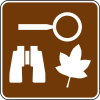Wikipedia:WikiProject U.S. Roads/Newsletter/Issues/Volume08/Issue04

|
| Volume 8, Issue 4 • Fall 2015 • About the Newsletter |
|
We've returned to our normal publishing format for this issue, so you'll find the quarterly assessment roundup, state- and project-level news as well as the selected articles and photos. They're back in their usual places. The Winter 2016 issue is due out in January, and as always, if anyone is interested in contributing, they can stop by our newsroom at any time. Finally, from those of us here at The Centerline, we send you best wishes for the upcoming holiday season. See you in 2016! ❖Imzadi1979  | |||||||||||||||||||||||||||||||||||||||||||||||||||||||||||||||||||||||||||||||||||||||||||||||||||||||||||||||||||||||||||||||||||||||||||||||||||||||||||||||||||||||||||||||||
Constructing a road junction list
The junction list is probably the most useful section of a road article since it provides detailed information in a format conducive to quick glances. Thus, it's important to get it right. When we create junction lists, we make sure to have two things: detailed county maps that show every notable junction and jurisdiction and the route log from the state DOT. In states like Alabama or Missouri, the route log is contained on maps, which is convenient, but for most states, you will need to look for separate documents. The We'll set up the junction list for Minnesota State Highway 197, since it's a short route and it has a lot of features you'll most likely encounter at some point or another when creating junction lists. According to the article, MN 197 is located entirely in Beltrami County, so we'll look at that county's MnDOT map. This also allows us to use Next is the Finally, the And with that, we've finished filling out {{Jcttop |state=MN |county=Beltrami }}
{{MNint
|location=Bemidji Township
|mile=0.000
|road={{jct|state=MN|US|2|US|71|city1=Park Rapids|city2=Grand Rapids}}
|notes=Interchange
}}
{{jctbridge
|location_special=[[Mississippi River]]
|mile=2.805
|mile2=2.844
|bridge=Paul Bunyan Drive Bridge
}}
{{MNint
|location=Bemidji
|lspan=2
|mile=6.130
|mile2=6.138
|road={{jct|state=MN|US|71|city1=International Falls}}
}}
{{MNint
|type=incomplete
|mile=6.997
|road={{jct|state=MN|US|2|dir1=west|city1=Crookston}}
|notes=Westbound exit and eastbound entrance only
}}
{{Jctbtm|keys=incomplete}}
The Junction lists should also include notable bridges and bridges over major rivers. MN 197's bridge over the Mississippi River is one of the latter, so it is included using The northern end of MN 197 has incomplete access to US 2, so we get to use the To finish off the junction list, we place The entire route is in Beltrami County.
While there are many junction list features this tutorial does explain, you may encounter numerous others that it doesn't. Wikipedia:Manual of Style/Road junction lists is a good page to scan if you're stuck on a certain part of a junction list and are unsure of the standards. For more specifics on the standards of citations, check out Wikipedia:Citing sources. References
| |||||||||||||||||||||||||||||||||||||||||||||||||||||||||||||||||||||||||||||||||||||||||||||||||||||||||||||||||||||||||||||||||||||||||||||||||||||||||||||||||||||||||||||||||
WikiConference USA 2015
On October 9–11, 2015, the Wikimedia Foundation’s regional chapter in Washington, DC, held the second annual WikiConference USA (WCUSA). This conference is a United States-centric three-day event that began last year in New York City that is to be a regionalized version of Wikimania, the international gathering of Wikipedia editors, readers, lurkers and other related administrators and educators. This year, sponsored by the Wikimedia Education Foundation (WikiEdu), the conference was held at the National Archives and Records Administration Building in Washington, DC. For this special conference, four members of USRD attended the conference for various reasons. These were Imzadi1979, who attended to present about the use of Wikipedia and Departments of Transportation throughout the country (as well as his home state of Michigan); Mitchazenia, who was the coordinator of volunteers through the entire conference; SounderBruce, a member of Wikimedia Cascadia who attended to learn more about Wikimedia Foundation events; and Viridiscalculus, who was there for leisure and interest. This is by far the largest gathering of members for USRD at an official conference, and it was headlined by Imzadi1979’s 10th Wiki-Anniversary on October 10, the day which he presented. Mitchazenia brought a wiki-cookie cake, designed with a capital W and 10 on the cookie in honor of his special day. Viridiscalculus brought pieces of paper saying U, S, R and D to cheer Imzadi on during his presentation. After all of his presenting, the group went to the Innovation Hub at the Archives to pose with and eat cake. USRD has already benefitted from materials learned at the WikiConference, including the use of the Open Computer Library Center (OCLC) to link maps and other sources for readers to access. Overall, the experience was excellent and USRD members intend to attend other events as they are scheduled, including WikiConference USA 2016, potentially located in Seattle, Washington. |
The Junction template and you
Now that you've got the skeleton of your MOS-compliant road junction list ready, it's time to fill it out with the {{Jct}} template. It simplifies and standardizes the display of highway shields on a road article and is to be used primarily in infoboxes and road junction lists. The template's parameters can be divided into several sections, including (but not limited to):
The jurisdiction parameters, The two route information parameters are where the template's magic happens. Using alternating parameters for the route's type and route's number, it displays a route shield and a link to the route's article with proper formatting for the height of shields, including wider ones. For example, That looks a little bare, doesn't it? Typically, a sign you see at a freeway exit will have much more than the shield and route number and those can be added into the junction table. The For example, You can also specify if a route that is listed with a "to" plate above its shield by using the For example, The final set of normal parameters is the location pair. For cities within the state (which have a normal CITYNAME, STATE article), use There's also room for a special symbol, such as those for airports and train stations, added using the When put together, the template will look something like this:
| ||||||||||||||||||||||||||||||||||||||||||||||||||||||||||||||||||||||||||||||||||||||||||||||||||||||||||||||||||||||||||||||||||||||||||||||||||||||||||||||||||||||||||||||||
Harnessing map archives
Over at the AARoads Forum, there is a list of state highway map archives online. We can leverage these archives for our research purposes, as noted in the last issue. Over the coming months, you should see more state-specific citation templates created to simplify the citation of the maps in these archives. For example, the newly created {{cite GDOT map}} allows an editor to cite any of the maps from the Georgia Department of Transportation or its predecessor department. To cite any of the monthly maps from 1932, say the one from February, an editor only needs to call Other options allow the department name to be wikilinked and map sections or insets to be specified. Templates for for other states work similarly. In the future, if any of the map links goes dead, we can modify the templates to point to an archived copy at the Wayback Machine or to another archive location. For states like Wisconsin that do not currently have their map archives online, we can add the links if WisDOT completes their project to scan their maps and put them online. We can also link readers to library card catalog records for the maps through OCLC Control Numbers to the Worldcat database. This will allow interested readers to locate paper copies of the cited maps for verification purposes, an extra bonus even if the maps are currently hosted online. | |||||||||||||||||||||||||||||||||||||||||||||||||||||||||||||||||||||||||||||||||||||||||||||||||||||||||||||||||||||||||||||||||||||||||||||||||||||||||||||||||||||||||||||||||
KML Corner
As far back as I can remember, I always wanted to be a KML specialist for USRD. Okay, well that's not true, but I do really enjoy creating KML files (KMLs) and, as long as I've been a member of USRD, always have. Since I started contributing to the project just over three years ago, a wide majority of my contributions have been KML files. To the outside editor, KMLs might seem a strange thing to be passionate about -- they aren't even the most important part of the maps task force -- but they've given me a simple way to help out the project I love, one that hardly consumes any time and allows me to contribute even when I'm busy in real life. And besides, it isn't as if they're completely useless; a KML is required for an article to pass an A-Class Review and is one of the marks of an upper-tier article within the project, as all articles assessed as GA-class or higher have one and, as of this writing, only four B-class articles have yet to receive one. In fact, I enjoy creating KMLs so much that in last year's fourth quarter issue, I proclaimed that it was a long-term goal to eventually give every article within the scope of USRD a KML. Then, a month or so later, Fredddie alerted me to a much faster way to create KMLs, which I documented in this year's winter issue. Since then, I've been creating KMLs at a previously unfathomable pace, able to top out at over 20 files created per hour when I'm in the zone and am working at maximum efficiency. Sometime last month, I started a concerted effort to accomplish my greatest long-term goal on Wikipedia, and I've started this series to casually inform you, the reader, of the progress toward its completion. Here's the foundation: I've been going through the state-level subcategories of Category:U.S. road articles needing KML in alphabetical order and creating KMLs for every current route in each category that isn't a cross-country route like a U.S. Route or an Interstate highway, state-detail articles excepted; I'll get to the cross-country routes toward the end. States and territories for which this was done (or very nearly so) before I began this effort were Alaska, American Samoa, Connecticut, Delaware, Guam, Iowa, Maryland, Michigan, Minnesota, Nebraska, New Mexico, North Dakota, Ohio, Rhode Island, South Dakota, the U.S. Virgin Islands and Vermont. I've also been mainly avoiding former routes for now unless they're complete layups because finding their routes on Google Maps is often more difficult and consumes more of my time. Basically, I'm doing the quickest ones first and saving the more laborious ones for last. Even so, the beginning of this journey has been a bit rocky. Alabama didn't necessarily have any routes for which the KMLs were extremely hard to create, but I was unable to stop myself from fixing the various problems its RJLs had while I was cranking out the KMLs. If you've already read our tutorial on how to correctly construct RJLs, you know that notes are supposed to be in sentence case—the first letter is supposed to be capitalized—and certain types of notes like concurrency termini are supposed to be color coded with the Arizona was a cakewalk relative to that, but Arkansas had all the same problems. Not only that, but Arkansas seems to hate signing concurrencies. What this does is split a lot of its state routes into multiple segments, which adds a lot of extra time in creating KMLs because I'd need to draw a path for each segment, put all the separate segments into a Google Earth folder and save that folder as the KML. It seems like over half of Arkansas' state routes are split into multiple segments. Most of the split routes are a modest two or three segments, but some of them are just ridiculous; Arkansas Highway 74 has eight separate, disconnected segments. As far as I know, this is the highest amount of separate segments given to one designation in the entire country, so it's good that I got this out of the way relatively early. Because of all this nonsense, Arkansas' category took more than a week for me to deplete. I had thought that next up would be California, but I didn't get the chance to do much with California because, while I was laboring with Arkansas, someone else already had. That someone is Chinissai, who might be the greatest user in the history of Wikipedia. Chinissai has created well over 100 KMLs for routes in California and Colorado since I've started this effort. I've already thanked him for his contributions, but I would like to do so again here, as it is really great to know that in an attempt to accomplish a goal as big as this one, I am not alone. After Chinissai was done with California, there were still a few KMLs to be created. Perhaps the most annoying KML to draw on Google Maps is the one for a route that runs alongside a freeway. The system will want to re-route your path onto the freeway at every interchange, causing you to manually fix it a bunch of times to get the path where you want it to be. For some longer U.S. Routes that straddle an Interstate, it's impossible to create the KML with one path, even for a state-detail article, because Google only lets you re-route your path a finite number of times (I think 20). California didn't have one of those, but it did have Foothill Boulevard, which was a worst of multiple worlds: it wasn't very easy to find, and when I did, I found that not only did most of its route closely follow a freeway, but it was split into five segments. That one aside, California was pretty harmless. And that's where we are now. As of this writing, there are 11,427 articles tagged as a part of USRD. When I started this effort, the number of articles that still needed a KML was 4943. It is currently 4357, a decrease of 596 in just over a month. By the time the next issue comes out, I hope to have even more progress to share with you on this journey toward 0. | |||||||||||||||||||||||||||||||||||||||||||||||||||||||||||||||||||||||||||||||||||||||||||||||||||||||||||||||||||||||||||||||||||||||||||||||||||||||||||||||||||||||||||||||||
| |||||||||||||||||||||||||||||||||||||||||||||||||||||||||||||||||||||||||||||||||||||||||||||||||||||||||||||||||||||||||||||||||||||||||||||||||||||||||||||||||||||||||||||||||
Assessment roundup
Here's how the leaderboard looks as of November 30, 2015:
There has been no change in the top ten since the previous issue. Michigan's relative WikiWork has slightly risen in a humorous manner. When the last issue was published, M-231 had not yet opened and was still listed as Future-class, a class which is not included in WikiWork calculations. However, the route opened on October 30, and Imzadi1979 sent its article to WP:GAN the same day. The article passed, adding a Good Article and its two points to Michigan's WikiWork calculations. Since Michigan's relative WikiWork is below 2.000, adding a GA caused its relative WikiWork to rise by a thousandth of a point from 1.735 to 1.736. As always, you can find full statistics for all 50 states and more at WP:USRD/A/S. And now for a look at how the project is doing as a whole:
There's some negative and some positive to take from this. On the sour side, the project lost a Featured Article and its net total of Good Articles decreased by one. On the lighter side, that lost FA came as a result of an A-Class Review in which Pulaski Skyway was decided to be outside of the project's scope, not because an article within the scope of the project was demoted. Furthermore, the relative WikiWork of the project continues a slow descent; a decrease in Stub-class and Start-class articles combined with a relatively large increase in B-class articles has led to the overall relative WikiWork of the project declining by 0.013.
|
State updates
| ||||||||||||||||||||||||||||||||||||||||||||||||||||||||||||||||||||||||||||||||||||||||||||||||||||||||||||||||||||||||||||||||||||||||||||||||||||||||||||||||||||||||||||||||
In other project news...
| |||||||||||||||||||||||||||||||||||||||||||||||||||||||||||||||||||||||||||||||||||||||||||||||||||||||||||||||||||||||||||||||||||||||||||||||||||||||||||||||||||||||||||||||||
Selected articlesThe following articles appeared as the Selected article on a portal or task force page in the summer quarter: |
Selected picturesThe following photos appeared as the Selected picture on the U.S. Roads Portal in the summer quarter:

| ||||||||||||||||||||||||||||||||||||||||||||||||||||||||||||||||||||||||||||||||||||||||||||||||||||||||||||||||||||||||||||||||||||||||||||||||||||||||||||||||||||||||||||||||
|
 | ||||||||||||||||||||||||||||||||||||||||||||||||||||||||||||||||||||||||||||||||||||||||||||||||||||||||||||||||||||||||||||||||||||||||||||||||||||||||||||||||||||||||||||||||
|
 | ||||||||||||||||||||||||||||||||||||||||||||||||||||||||||||||||||||||||||||||||||||||||||||||||||||||||||||||||||||||||||||||||||||||||||||||||||||||||||||||||||||||||||||||||
From the editorsThe next quarterly issue should be out in the winter. The editors of the newsletter would like to hear from you, the reader. What do you like about the current format? What should be changed? Removed? Added? Your comments are needed. Lastly, remember that this is your newsletter and you can be involved in the creation of next issue released for the winter. Any and all contributions are welcome. Simply let yourself be known to any of the undersigned, or just start editing! |
Contributors to this issue
| ||||||||||||||||||||||||||||||||||||||||||||||||||||||||||||||||||||||||||||||||||||||||||||||||||||||||||||||||||||||||||||||||||||||||||||||||||||||||||||||||||||||||||||||||


